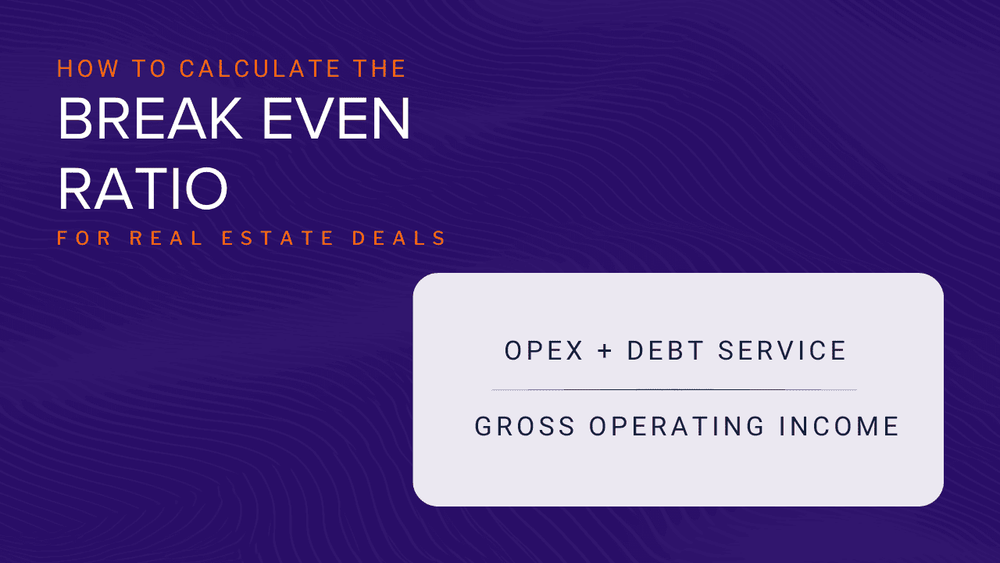Learn How to Calculate the Break Even Ratio for Real Estate Deals

One important metric to consider in real estate investing is the break even ratio. Find out here what the break even ratio formula is and how to calculate it.
Break Even Ratio (BER) Calculator
Enter your property's Gross Operating Income, Operating Expenses, and Total Debt Service, the calculator will output the Break-Even Ratio (BER) and the occupancy rate needed to cover your costs.
Ratio: 0.75
Status: Pass
Pass. The ratio is less than 0.85, indicating a healthy margin above costs. Your property would need to be occupied 75% of the time to break even.
For a more comprehensive, full-featured real estate investment calculator, sign up for Remetrics.
The break-even ratio (BER) is a useful metric for evaluating a real estate investment property. Investors and lender use this important tool in real estate investing to determine pricing, and to assess a project's viability. It is the percentage of gross income that must be spent on operating expenses in order to break even.
Simple formula to calculate the break-even ratio for your investment property
To calculate your BER, you need to know two things:
- How much your property earns (gross operating income)
- How much you spend on to keep it running (operating expense)
- Loan payments (debt service)
Simply divide your total operating expenses by your gross income.
For example, if your monthly gross income for your rental property is $2,000, loan payment is $600 and your operating expenses are $900, your BER would be 75%. This tells you that your rental property needs to be occupied 75% of the time to cover expenses and debt service.
In this example the break even ratio formula looks like: $900+$600/$2,000 = 0.75
What is a good break-even ratio in real estate?
A break-even ratio is the point at which a business (investor) has earned enough revenue to cover all of its expenses. The break-even point is when its revenue is equal to its costs.
If your BER is high, it means that you are not generating enough income to cover your operating expenses. This is not a sustainable situation and you will eventually have to raise rents or sell the property.
To fix the issue you can increase the rental income of the property, decrease the annual debt service or decrease annual operating expenses. Maybe your vacancy rate is too high and you need to improve the property so it is more attractive to potential tenants. You might also look for ways to decrease yearly costs.
Break Even Ratio Rule of Thumb
Either an investor or lender may use the BER in their analysis. Real estate investors want to determine the occupancy level they need to maintain or exceed. Is that occupancy rate realistic for the property? Do your research to find common occupancy levels for similar properties nearby.
Lenders want to know the investment will cover operational expenses and debt service. As a rule-of-thumb they want to see a ratio under 85%. This ratio requirement may vary depending on the lender. You will need to reach out to them for a loan anyway. Might as well ask their expected BER while you are at it.
If your BER is low, it means that you are generating more income than you are spending on operating expenses. This is a good situation to be in and it means that you are making a profit on your investment property.
Analyzing Real Estate Deals
The break-even ratio formula is one of many useful metrics real estate investors use to analyze a rental property. This ratio is a simple calculation that measures the relationship between a property's monthly income and expenses. The ratio tells you whether or not you can expect an investment to cover the cost of owning it, and how much room you have for error.
Other useful metrics include Return on Investment (ROI) and Cap Rate. Depending on your goal for the property, use as many metrics as possible to make sure you can be confident in the deal.